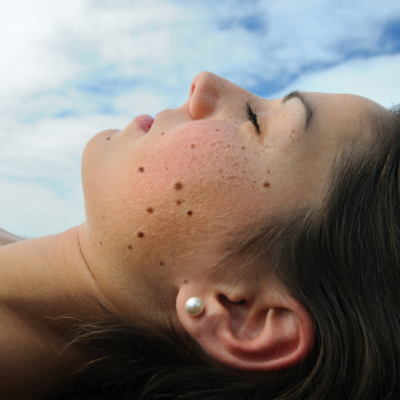Ask the Dermatologist: Acne Skincare Advice
When you’re battling acne, it’s important to make sure your products and practices aren’t contributing to the problem. How do you choose the right over-the-counter (OTC) products and self-care to complement your dermatologist-prescribed regimen?
California Skin Institute’s Dr. Jennifer Sorrell, a triple board-certified dermatologist, gives advice on common questions about acne skincare.
Q: I have an appointment to see a dermatologist about my acne. What can I do to address these acne breakouts in the meantime?
A: Acne flare-ups can be really annoying. When you’re not using topical prescription medications for your acne, you can try over the counter (OTC) cleansers or pads containing salicylic acid or benzoyl peroxide to start. Some brands offer a kit composed of several products that, when used together, make treating mild pimples a no-brainer. California Skin Institute (California Skin Institute), for instance, offers the Acne Solutions Kit, a four-step cleansing and treatment system. If you are using a topical prescription medicine from your dermatologist, make sure they know about any OTC products you’re using too. Sometimes, the combination can be too drying.
Q: I’m frustrated by my pimples and would like to make them less noticeable by covering them up. Any makeup tips for my skin?
A: The desire to cover up pesky flare-ups is completely understandable. Unfortunately, some makeup can make acne worse by clogging the pores. Common offenders that can clog pores are concealer, foundation, powder, bronzer, primer and more. Be sure to look for makeup products indicating that they are “non-comedogenic”, which means not pore clogging.
Q: My dermatologist gave me tretinoin cream but I’m getting so dry! How can I better tolerate this medicine?
A: Topical retinoids like adapalene (Differin), tretinoin (Retin-A) and tazarotene (Tazorac) are the gold standard for acne care. This family of medication gets rid of active pimples and prevents new pimples from forming, but can cause dryness in some patients. You can help avoid this by waiting at least 15 minutes after washing your face to allow your pores to close. Then apply just a pea-sized amount to your entire face, remembering to treat the entire acne-prone area. Make sure to apply a non-comedogenic moisturizing cream after your retinoid. California Skin Institute’s Ultra Lite Moisture Dew is great for a little extra hydration, and the Fortfied Moisturizer is an excellent option if your skin has become particularly parched. Remember that you don’t need to see excessive redness, peeling or dryness for your prescription product to work!
Q: My acne is leaving behind dark marks! What can I do to help these fade?
A: Once acne has resolved, residual red or dark spots can remain for some time. One of the most effective ways to reduce this discoloration is the regular use of sunscreen. You should apply it daily regardless of weather and reapply every 2 hours while outside—more frequently if swimming or sweating. Make sure your sunscreen is non-comedogenic so that it does not clog your pores. Colorescience Sunforgettable Total Protection Face Shield SPF 50 is a great choice. It blends invisibly on various complexions, and is a completely physical sunscreen that is water resistant.
A product with exfoliating glycolic acid can also be very helpful in evening out dark spots from acne. I recommend using a face or body wash like California Skin Institute’s Glycolic Gentle Cleanser (5% glycolic acid) or Glycolic Elite Cleanser (10% glycolic acid). Just remember that any exfoliating product will make your skin more vulnerable to the sun — so be sure to also use sunscreen, without fail!
Q: I’ve noticed flare-ups with certain foods. Does my diet affect my acne?
A: Dietary impact on acne is an interesting and controversial topic. A recent study showed increased acne in patients who have a diet high in dairy or high on the glycemic index (ie, foods that release glucose or sugar quickly). When they looked more closely at dairy, they found that patients consuming skim or 1% milk had more severe acne than those consuming 2% or whole milk. Interesting, right? I tell my patients that the jury is still out on foods like chocolate. However, if you feel certain foods lead to a pimple, you can try avoiding them. I do not recommend aggressively cutting food groups or dieting. Just eat a heart-healthy well-balanced diet.
If you still have unanswered questions about acne care — or need expert diagnosis and treatment — make an appointment to see Dr. Sorrell at California Skin Institute’s San Francisco or San Mateo office. Not convenient locations for you? Schedule a time to be seen by another board-certified dermatologist at any of our locations throughout California.



 / 291 Reviews
/ 291 Reviews